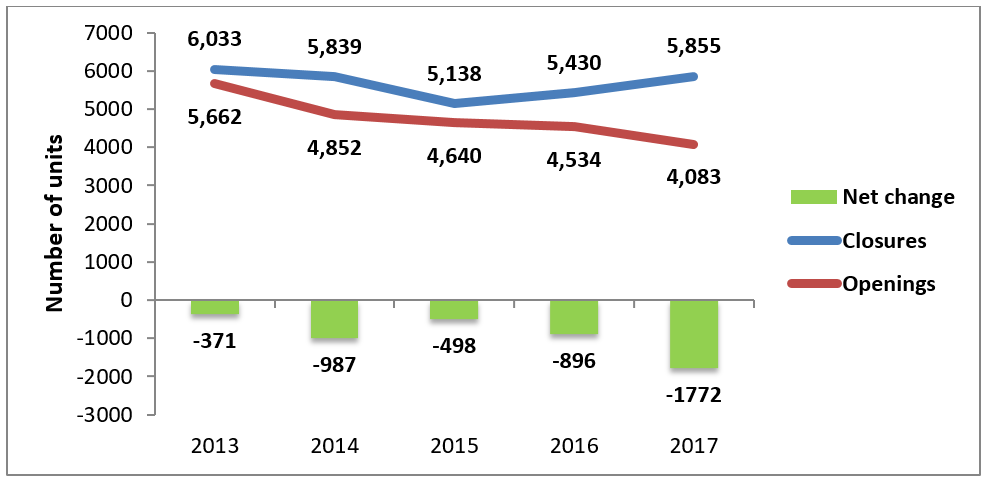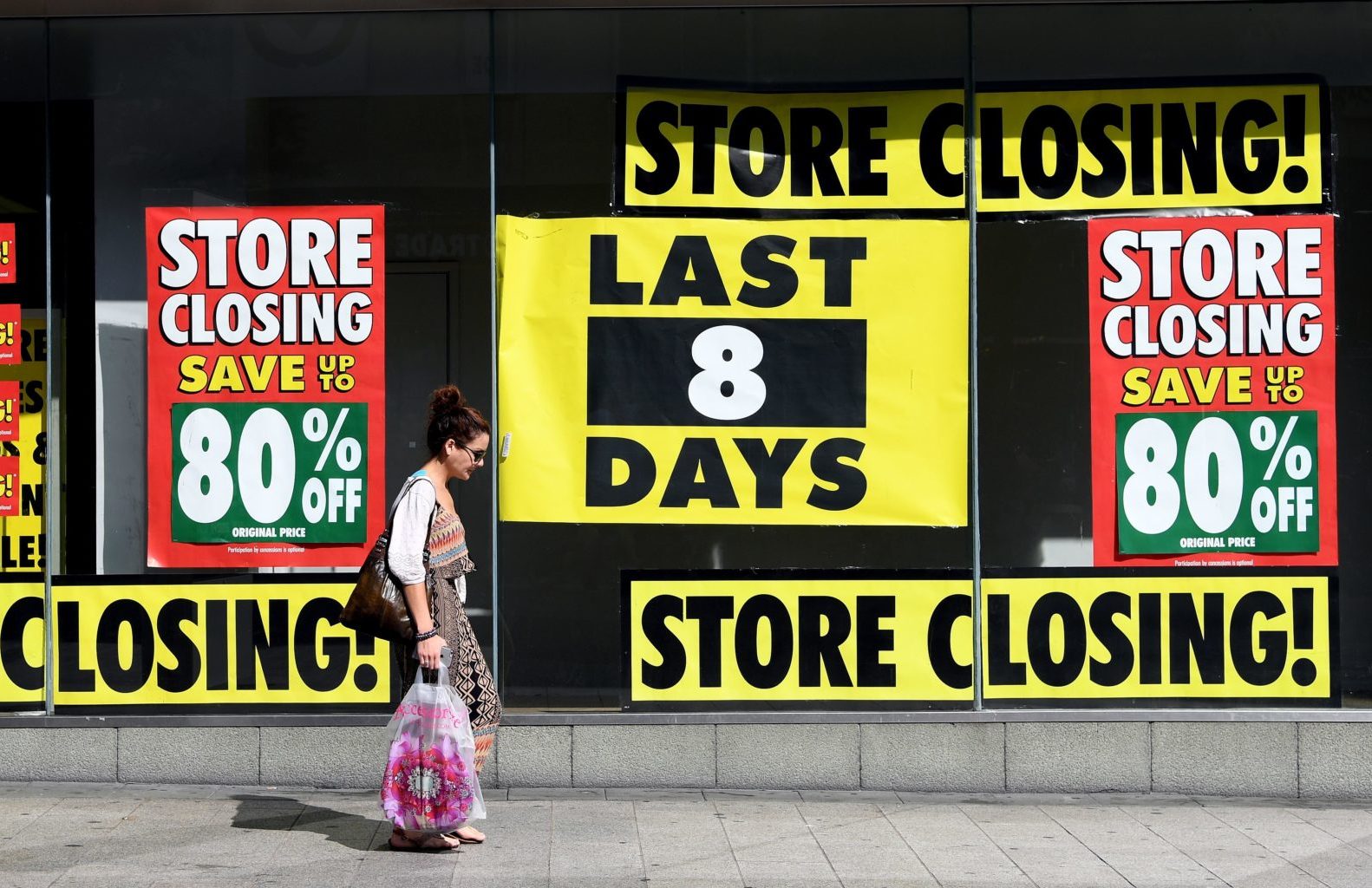The brutal Darwinism of Britain’s high streets is laid bare in a report this week from PwC and Local Data Company that reveals that 11 stores opened on British high streets every day in 2017 but 16 stores closed every day as well.
The number of new high street stores opening in 2017 fell to 4,083, from 4,534 in 2016, according to research compiled by the Local Data Company (LDC) for PwC.
The second half of 2017 was the toughest period in years with substantially more closures and fewer openings than the first six months of the year, reflecting a tough trading environment influenced by a slowdown in consumer spending, rising staff and business rates costs and withering consumer confidence.
Beauty product stores, coffee shops, cafés and tearooms, and ice cream parlours showed the highest increase in net store numbers in 2017. Booksellers and tobacconists also had a good year, with physical book shops and vaping remaining popular with consumers.
5,855 outlets closed on Great Britain’s high streets in 2017, at a rate of 16 stores a day, a slight increase on the 15 stores a day closing in 2016, when 5,430 outlets closed. The findings equate to an overall net loss of 1,772 stores disappearing from Great Britain’s town centres in 2017.

Lisa Hooker, consumer markets leader at PwC, said: “2017 was tough for the British retail industry, particularly the second half of the year. We saw volatility from month to month and across different sectors as wage growth failed to keep up with inflation, forcing many shoppers to think more carefully about their spending habits.
“On top of this, many retailers are increasingly feeling the impact of the acceleration of online shopping as consumers begin to feel more comfortable with the price transparency and reliability of delivery options offered by online players. Digital offerings are increasingly becoming make or break in areas like fashion, but also for banks, travel agents and estate agents – all of which closed a significant number of high street outlets last year.
“For these sectors, store closures are less driven by the market environment and more by bigger structural changes, as customers increasingly expect to interact with their service providers online or via apps.”
The high street has not bounced back at the start of this year, according to PwC. “We’ve seen a tough start to 2018, but it’s important to remember the British high street still plays a vital role in society and there are elements of growth amongst the headline numbers of decline. For example, almost 400 new clothes shops opened last year, even though over 700 closed. And, while four pubs a week closed, at the same time three a week opened. Retailers and leisure operators need to continue looking at their businesses – including their store portfolios – to make sure they have a clear brand and product offering. The winners at the moment, such as nail bars, coffee shops, bookstores and craft beer pubs, are all flourishing because they serve the needs of emerging consumer segments, such as experience-seeking millennials and offer a differentiated physical proposition that online offerings can’t compete with.
“The British high street is undoubtedly facing headwinds but retailers are waking up to the challenge and reimagining the future. The winners will be those who are agile and open minded in working out the best way to ensure their stores differentiate themselves and earn their place on the high street.”
Lucy Stainton, senior relationship manager (Retail), at The Local Data Company, sounded a more optimistic note about the resilience and creativity of the British high street. “For 2018 we predict there will be continued green shoots of growth across almost all sub-sectors, visible beneath the headline trends, as newer entrants and younger brands take this ‘shake out’ as an opportunity to pick up available property. Businesses with a relevant proposition and a strong understanding of their customer can absolutely still thrive in the right locations. Equally more established brands who continue to tweak their offer and innovate on the way through will no doubt see positive results and retain their valued place on our high streets,” she said.

